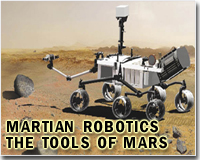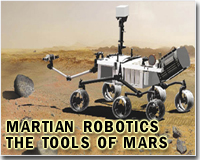Fans of NASA’s Mars rover Perseverance can now see the robotic explorer and its activity in a 3D depiction of the Red Planet terrain via a new website.
The site, Explore with Perseverance, is updated when the rover makes a significant move. NASA has uploaded seven locations, starting with the Octavia E. Butler Landing Site at which the spacecraft landed Feb. 18.
Software developers used Perseverance’s high-resolution images, along with some imagery from orbiting spacecraft, to make a 3D model of the terrain, Carolina Martinez, the agency’s manager of Mars public engagement, said in an interview.
“We really want people to connect with the mission and see where the rover is,” Martinez said. “It you only have two-dimensional images, you don’t really get a sense of scale.”
“This is a new part of Mars that’s never been seen in this way,” Martinez said. “With each drive, we have new imagery and can fill in the locations with corresponding images.”
After seven months on Mars, the rover has collected enough imagery for the space agency to launch the new site. The public can view the rover from 360-degrees of perspective to get an idea of the rocks, dunes and hills around Perseverance.
When a new user views the site for the first time, the default view shows the rover at its most recent drilling locaton, a rock NASA calls Rochette. The rover drilled two rock sample corings there Sept. 6 and 8 for possible return to Earth in the 2030s.
“In the future, and once we have more imagery as we explore, we would like to feature each drill site,” Martinez said.
NASA missions frequently provide regularly updated images that can be viewed immediately upon arrival via space transmissions, but the new site provides greater context for Perseverance’s images.
The space agency said the website should help provide perspective, especially by comparing the size of the rover to the topography around it when there are no trees or people or buildings for reference.
The viewing tools are based on the software NASA engineers actually use to select new destinations for the rover, Jeff Pamer, a software developer for the agency, said in an interview.
The highly technical in-house system, the Advanced Science Targeting Tool for Robotic Operations, has been modified to allow the average person to control it, Pamer said.
“Our scientists use something similar to this to look at the latest images and explore the surface around the rover to find rocks that look interesting,” he said. “It was a challenge to adapt that system to make it generally accessible to the public.”
NASA provides a similar website that still is updated for the Mars rover Curiosity, which landed in 2012, but the Perseverance site includes upgrades to select more locations. Perseverance also has more color cameras than Curiosity.
Another interactive page on NASA’s website — Where Is Perseverance? — shows more detailed maps with the current location and previous pathway of the rover and Ingenuity Mars helicopter as they explore the Red Planet.
NASA officials say they hope to allow more public input, with possible virtual reality tools that will make people feel like they’re on Mars.
“Perhaps in the future, people can tag cool rocks or things they see in the rover’s images that may be of interest. That would be really cool,” NASA’s Martinez said.


